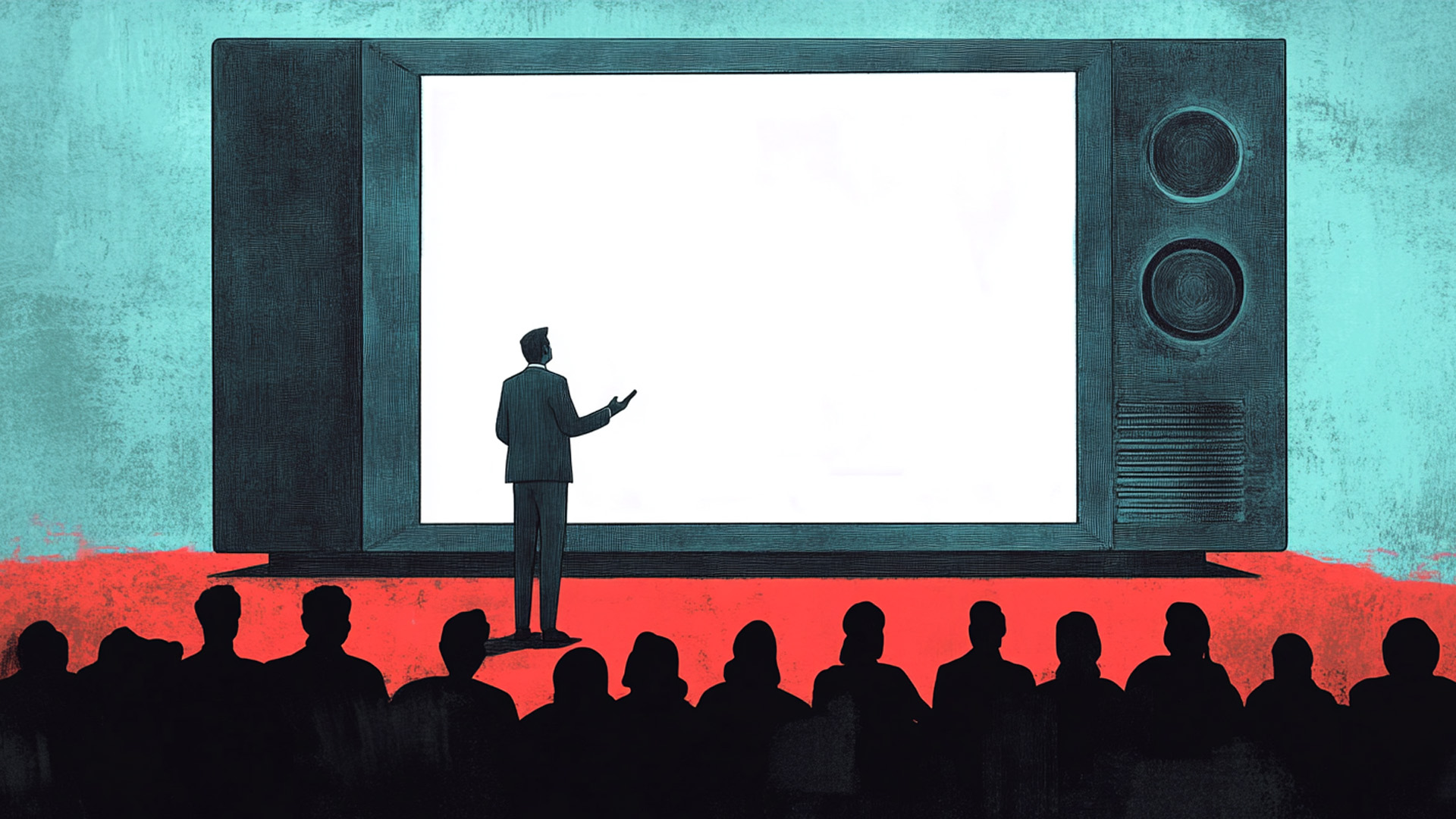TV’s identity crisis: Biggest trends from 2025’s upfronts and NewFronts

Subscribe to NCS for the latest news, project case studies and product announcements in broadcast technology, creative design and engineering delivered to your inbox.
The television industry gathered in New York this month for its annual ritual of wooing advertisers with promises of innovation, scale and effectiveness. After presentations across upfronts and NewFronts, one thing became clear: nobody seems to want to be in just the TV business anymore.
From streaming giants to smart TV manufacturers, companies are racing to reinvent the viewing experience, and themselves, in a landscape where traditional boundaries between content, commerce, and technology continue to erode. Here are the five key trends that dominated the 2025 presentations:
1. Your TV wants you to stop watching and start shopping
If this year’s presentations are any indication, the industry is determined to transform television from a passive entertainment medium into an interactive shopping mall. Virtually every platform showcased some form of “shoppable” advertising technology.
Samsung’s new “ShoppingBreak” formats mimic TikTok’s commerce features, while Vizio’s Walmart-powered “MyHub” promises to make “pizza deals and playoff schedules finally live in harmony” – a use case apparently clamored for by exactly no one.
LG Ads took interactivity even further with gamified ad experiences and QR codes scattered across the screen like digital confetti. The effort to turn every viewing moment into a potential transaction is so aggressive one might wonder if these companies are compensating for something… perhaps the declining relevance of traditional TV advertising?
The trend reaches beyond device manufacturers, with even The New York Times announcing shoppable integrations for Cooking and Sports content. Soon you’ll be able to impulse-purchase that cast-iron skillet while reading about how to season it properly.
2. AI hype reaches peak buzzword density
No technology presentation in 2025 would be complete without liberal use of “AI” as both noun and adjective, and the TV industry delivered with algorithmic enthusiasm.
Google’s Display & Video 360 platform is now “supercharged with Google AI,” while Future Today’s marketplace uses machine learning to process everything from geography to device type to time of day. Upwave even introduced what it calls “AI from the future,” which sounds impressive until you realize it’s just predictive analytics with a sci-fi rebrand.
To be fair, some applications show genuine promise.
Tubi’s AI-powered “Moments” technology analyzes content tone and visual cues to place ads in contextually relevant scenes. Wurl’s emotional targeting system delivered impressive results for a quick-service restaurant, generating substantial sales and store visit increases.
But amid the buzzword bingo, a question lingers: will all this algorithmic optimization actually improve the viewing experience, or just make ads harder to avoid?
3. Streaming first, linear second
Warner Bros. Discovery stunned the crowd at the Theater at Madison Square Garden with the announcement that its streaming service Max will once again be called HBO Max. The company stripped HBO from the name in 2023, believing the HBO brand name was too exclusive for the service’s ambitions to broaden its audience.
Dropping the prestigious HBO logo from the service’s name was a dubious decision from the start. But restoring it was a recognition of an undeniable fact: the future belongs to streaming, so why relegate a familiar and respected brand name to the waning cable box?
CNN and ESPN announced that their direct-to-consumer streaming services, rolling out later this year, will use the network names that have been familiar to cable viewers for more than four decades. The monikers will not carry a plus sign or any other designation that suggest the product differs from what’s on TV, and that’s by design.
Younger viewers may be forgoing cable subscriptions, but they know the CNN and ESPN brand names through their digital content. For those viewers, streaming isn’t an add-on, it is the way they watch TV.
Fox, meanwhile, will use ‘One’ in the name of its streamer, Fox One. This is already confusing since it also launched an ad product called OneFox.
4. Sports: the final fortress of linear TV
If one word was uttered more than “AI” during upfront week, it was “sports.” Traditional broadcasters clung to their live sports rights like shipwreck survivors to floating debris, their last reliable audience magnet in a fragmented landscape.
NBCUniversal promoted what it dubbed “Legendary February,” a 17-day stretch featuring the Super Bowl, 2026 Winter Olympics, and NBA All-Star Weekend. The company even trotted out Michael Jordan himself, who will return to NBC as a special contributor to NBA coverage, a nostalgic nod to the network’s 1990s glory days that felt oddly fitting for an industry desperately seeking its past relevance.
Disney positioned itself as “home to the most live sports hours in the industry,” while ESPN detailed its streaming service with a $29.99 unlimited plan including all ESPN networks and content. Even Amazon trumpeted becoming “the new home court for the NBA’s biggest games starting October 24.”
Industry observers didn’t miss the irony: as viewers abandon appointment viewing for everything else, traditional media companies are betting their futures on the last content category where people still show up on schedule.
It’s a strategy that works until the inevitable moment when sports leagues decide they no longer need networks as middlemen.
5. Economic reality crashes the party
The elephant in every presentation room was the challenging economic environment. According to one report, more than half of marketers will be trimming budgets in 2025, shifting toward digital media with cheaper inventory and emphasizing performance campaigns.
This reality explains the industry-wide obsession with measurement, outcomes and efficiency.
The underlying message was clear: in an era of tightening budgets, the companies that can demonstrate concrete business outcomes will win advertisers’ shrinking dollars.
6. The creator-shaped hole in the room
For all the star power and executive speechifying at traditional media presentations, the most glaring absence was any substantive acknowledgment of YouTube’s creator economy, the very force reshaping audience attention across screens.
While network executives paraded celebrities and hyped scripted content, YouTube quietly expanded its sports dominance by securing exclusive rights to stream the NFL’s first-ever Friday game from São Paulo. Rather than just another streaming service, YouTube has become the default entertainment platform for younger viewers who’ve never paid for cable.
The awkward silence around YouTube’s ascendance feels increasingly like denial.
Traditional media’s refusal to directly acknowledge their most disruptive competitor reveals an industry still struggling to reckon with a fundamental shift: content doesn’t need networks anymore, but networks desperately need content creators.
As traditional players unveil ever more complex ad products and measurement solutions, YouTube’s creator-driven ecosystem continues to generate thousands of hours of fresh content daily that viewers choose to watch… a simple value proposition that seems increasingly foreign to legacy media companies obsessed with forcing commerce into every viewing moment.
Subscribe to NCS for the latest news, project case studies and product announcements in broadcast technology, creative design and engineering delivered to your inbox.





tags
Amazon, Amazon Prime Video, CNN, Disney, ESPN, Fox Corp., Fox Corporation, Fox One, Free Ad-Supported Streaming Television (FAST), google, HBO, HBO Max, LG Ad Solutions, NBCUniversal, Netflix, NFL, peacock, Samsung Ads, the new york times, TikTok, Tubi, Upfronts, Vizio, Walmart, Warner Bros. Discovery, WBD, Wurl, youtube
categories
Broadcast Business News, Heroes, Streaming